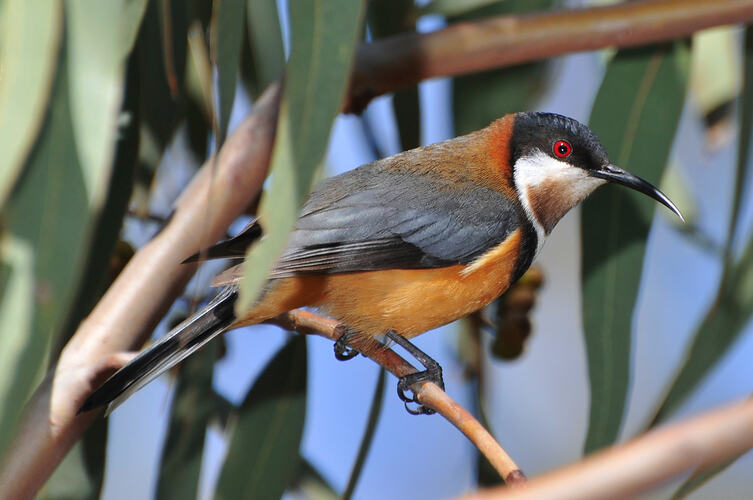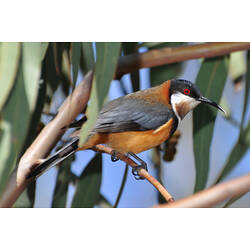General Description
A small honeyeater easily identified by its long, slender, down-curved beak. They have a dark brown body and a white throat with a central brown patch. Back of neck is red-brown. Underparts are buff. Top of head is black (male) or grey-black (female), which extends along the side of the neck to the breast. Bill to tail length is up to 16 cm. Their call is a rapid trill. Are energetic fliers, darting from shrub to shrub.
Biology
Eastern Spinebills use their long bill to probe flowers for nectar. They generally feed while perched, but can hover while collecting nectar like a hummingbird. Will also eat insects. Females will build the nest and incubate two to three eggs. The nest is a small cup constructed from grass, bark, twigs, hair and spider webs. Nests are generally built in a tree fork, 1-5 m off the ground. Both males and females feed the chicks. Eastern Spinebills are altitudinal migraters, moving to lower areas during autumn and winter. They have adapted particularly well to urban gardens.
Distribution
Eastern mainland Australia and Tasmania.
Habitat
Forests, heathland, woodlands and urban areas.
More Information
-
Animal Type
-
Animal SubType
-
Brief Id
A small orange-brown, black and white honeyeater with a long down-curved bill for feeding on nectar.
-
Colours
Brown, White
-
Maximum Size
16 cm
-
Habitats
-
Diet
Nectar
-
Endemicity
-
Commercial
No
-
Conservation Statuses
CITES: Not listed, FFG Threatened List: Not listed, EPBC Act 1999: Not listed, IUCN Red List: Least Concern
-
Taxon Name
-
Common Name
Eastern Spinebill
-
Kingdom
-
Phylum
-
Subphylum
-
Class
-
Order
-
Family
-
Genus
-
Species Name
tenuirostris






